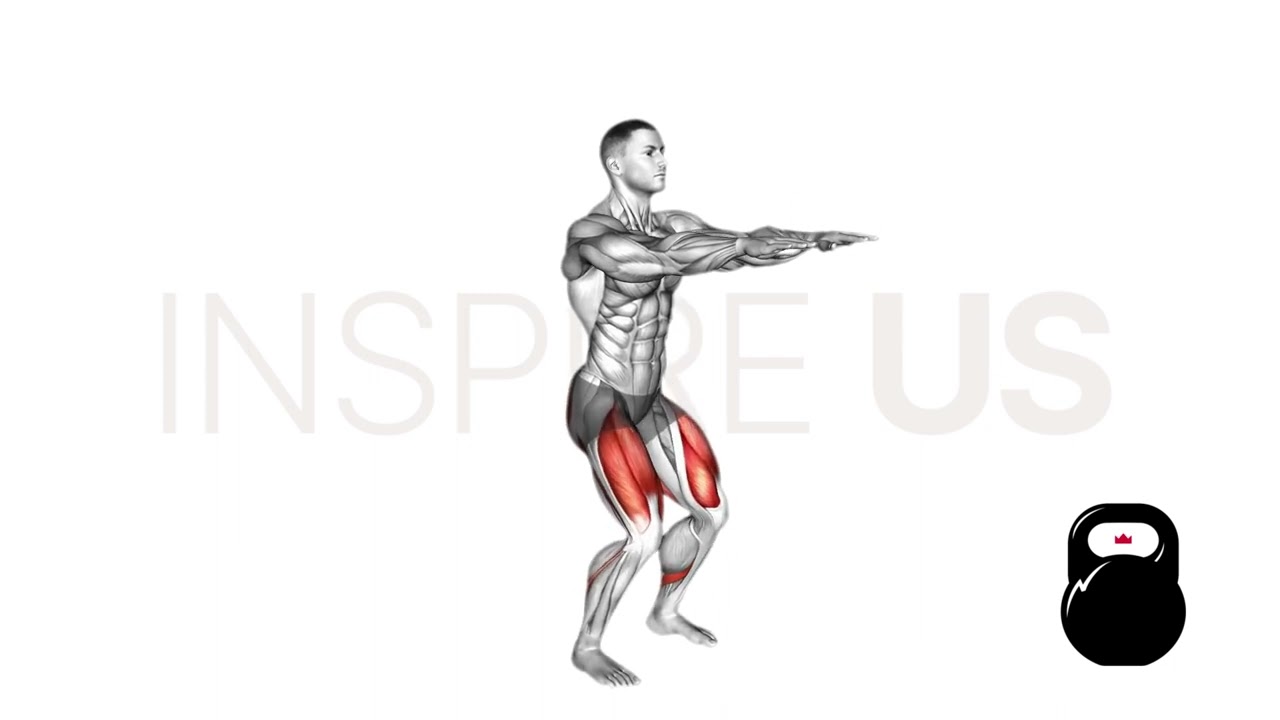Half Knee Bends: Benefits, Muscles Worked, and More
Whether for the purposes of rehabilitation or simple low-impact exercise, the half knee bend is a movement that is too often overlooked.
Half knee bends are one among the simplest body weight exercises available, as it requires no equipment nor advanced familiarity with exercise mechanics, and is generally accessible to individuals of all types, save those with a history of knee injury.
Half knee bends are visually and mechanically similar to partial squats, where the focus of the exercise is to utilize the knee flexion biomechanic so as to target muscles like the quadriceps femoris, glutes and hamstrings with as little impact as possible.
What are Half Knee Bends?
In more technical terms, half knee bends are a multi-joint bodyweight compound movement (and stance) primarily encountered in novice level calisthenic programs or as a rehabilitative exercise for individuals with poor knee mobility.
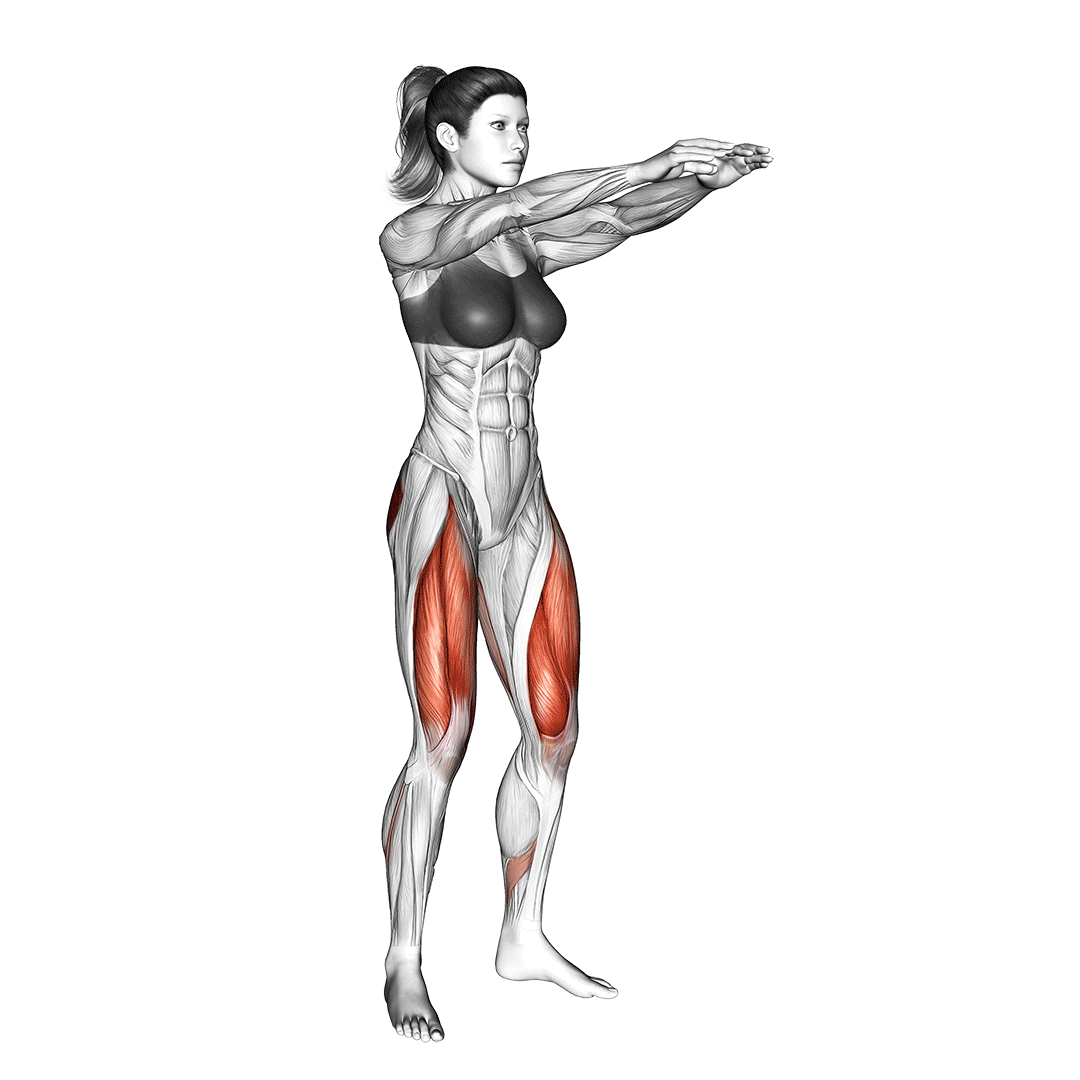
They require no equipment and can be performed at practically any level of training experience, making half knee bends uniquely suited for a variety of purposes apart from simple muscular training.
For exercisers with trouble maintaining their balance or stability during a partial squat stance, the usage of a countertop or chair may provide extra support.
How to Perform Half Knee Bends
To perform a half knee bend, the exerciser will stand upright with their feet set slightly wider than hip-width apart and the toes facing somewhat outwards.
Keeping the head facing forward and bracing the core, the exerciser will then bend at the hips and knees simultaneously, descending until they reach just shy of a 90° angle at the knee. The heels should remain flat on the floor and the hips bent alongside the knees.
Holding this position for a count, the exerciser will then return to a fully standing position by extending the hips and knees simultaneously once again.
This completes the movement.
What are the Benefits of Doing Half Knee Bends?
Despite its underrated reputation, the half knee bend is capable of improving several aspects of an exerciser’s physiology without much of the impact or risk that comes with performing many other exercises of the same benefits.
Improved Knee Integrity and Function
As is clued in by its name, half knee bends primarily target the knee and its relevant biomechanical functions.
This means that - with regular performance - the exercise can lead to improvements in the actual physical integrity of the knee joints themselves, as well as aid in stable execution of knee flexion and knee extension mechanics.
For individuals with knee issues unrelated to an injury, performing half knee bends can help restore strength and stability to their legs.
Quads and Glutes Training Stimulus
Though not as intense as other lower body exercises, half knee bends can also benefit the muscles of the legs by inducing moderate training stimulus with little to no risk of developing an injury.
This can aid in creating a more cohesive workout routine if the half knee bend is programmed as an accessory exercise, or otherwise help in returning muscular strength to an athlete who has taken some time away from training.
Improved Knee Mobility
Half knee bends specifically make use of the first half of the knee joint’s range of motion, as they are not meant to be performed beyond a 90° angle.
While it is uncommon for uninjured individuals to have mobility issues at such a range, regular performance of the half knee bend can nonetheless aid in maintaining flexibility of the knees within that specific range.
When combined with other stretches that target the knees and quadriceps, a full range of mobility may be achieved - especially if the exerciser transitions to deep knee bends as half knee bends become less of a challenge for them.
Technical Practice for Full Squats or Deep Knee Bends
Half knee bends are not only an exercise but also an initial stance, with many movements beginning in a half knee bend position.
This can make regularly practicing half knee bends an excellent way of improving a lifter’s technical proficiency in other exercises that have a similar movement pattern, such as squats, deep knee bends or step-ups.
Muscles Worked by Half Knee Bends
Despite being a compound exercise, the relatively short range of motion of half knee bends means that only a few muscle groups are actually utilized in any capacity, all of which are located around the upper legs and pelvis.
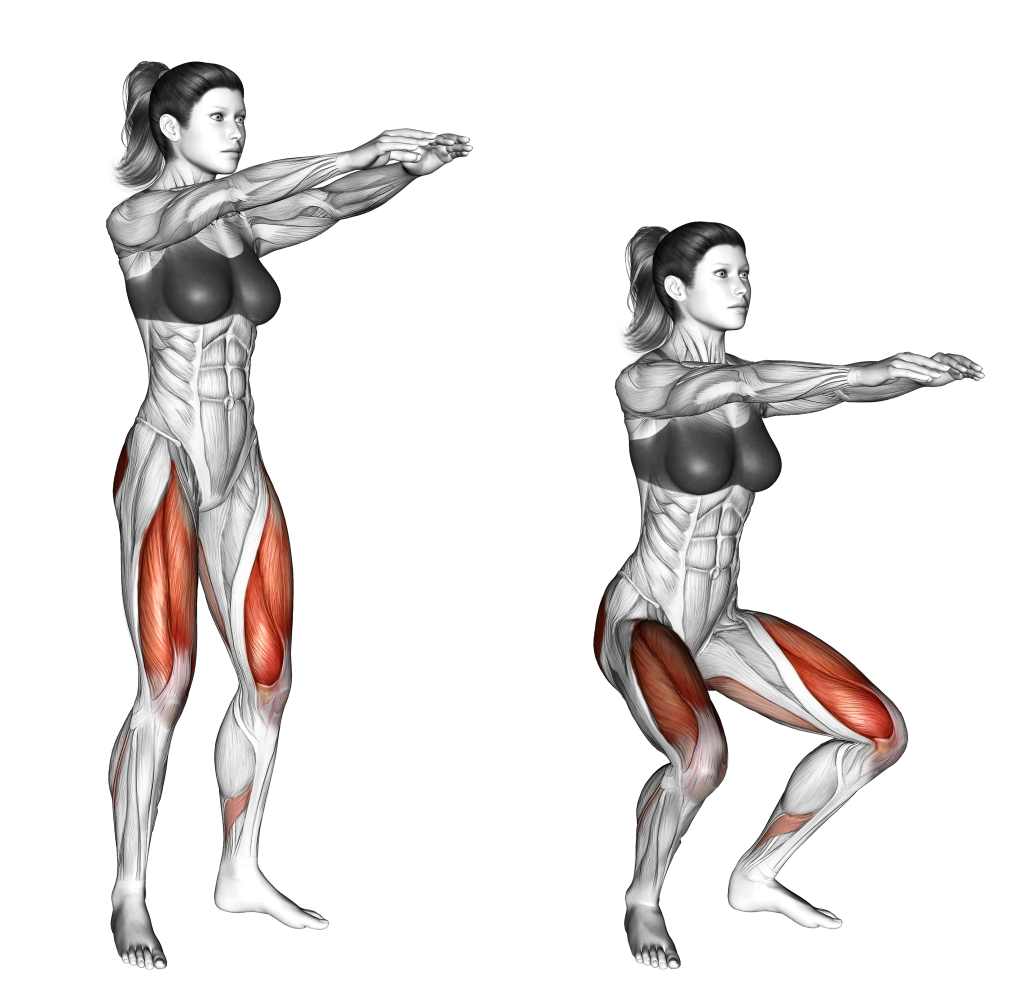
The Quadriceps Femoris
The quads are primarily recruited so as to create knee flexion as they lengthen, and to create knee extension as they contract.
Knowing this, it should be no surprise that the main muscle involved in a repetition of the half knee bend is the quadriceps, as they are responsible for the entirety of the movement in both a dynamic and static capacity.
The Muscles of the Glutes and Hamstrings
As secondary mover muscles, the glutes and hamstrings are also recruited to a certain extent during half knee bends, as they aid in the movement of the pelvis and otherwise stabilize the lower body during both phases of the exercise.
Common Mistakes of Half Knee Bends
Descending Unevenly
Just like in all other variations of the squat movement, bending at the hips or knees in a non-synchronized manner can place excessive tension and loading on one set of joints.
Ideally, performing half knee bends will involve evenly distributing the momentum and weight of the lifter’s body across both their hips and knees - meaning that they must move simultaneously, regardless of whether that is towards a state of flexion or extension.
Going Past 90°
Though there is technically nothing wrong with bending the knees beyond a ninety degree angle, it is not the intended purpose of the half knee bend, and braking at the knees mid-squat can lead to more wear and tear than is necessary on the connective tissues of the joint.
Unless attempting to perform a different exercise, it is best to keep half knee bends above 90° degrees of flexion, or relatively close to parallel depth.
Diving and Bouncing
Like most other exercises, using excessive momentum during half knee bends can lead to injuries and a reduced effectiveness of the exercise itself.
Whether this occurs with the exerciser “dive-bombing” into the movement or bouncing once they’ve reached proper depth, both cases will place excessive loading and shear force on the joints of the lower body, as well as defeat the entire purpose of the exercise.
Alternative Exercises to the Half Knee Bend
For individuals that have successfully progressed enough to take on more intense and wide-reaching exercises, there are quite a number of alternatives to the half knee bend that build on the foundation brought by the latter exercise - thereby allowing for more efficient and greater results.
1. Deep Knee Bends
Just as how there is a half knee bend, there is also an exercise known as deep knee bends.
As the name implies, this particular alternative features the exerciser lowering themselves until they are practically kneeling on the floor, rolling forward onto the balls of their feet and then returning to a standing position.
Deep knee bends are often used as a progression from half knee bends for previously injured lifters that are slowly regaining their lower body mobility, or as a more effective warm-up exercise.
2. Bodyweight Squats
As was mentioned earlier in the article, the half knee bend is mechanically similar to the motion of a conventional bodyweight squat, with the sole difference being in the range of motion of the movement.
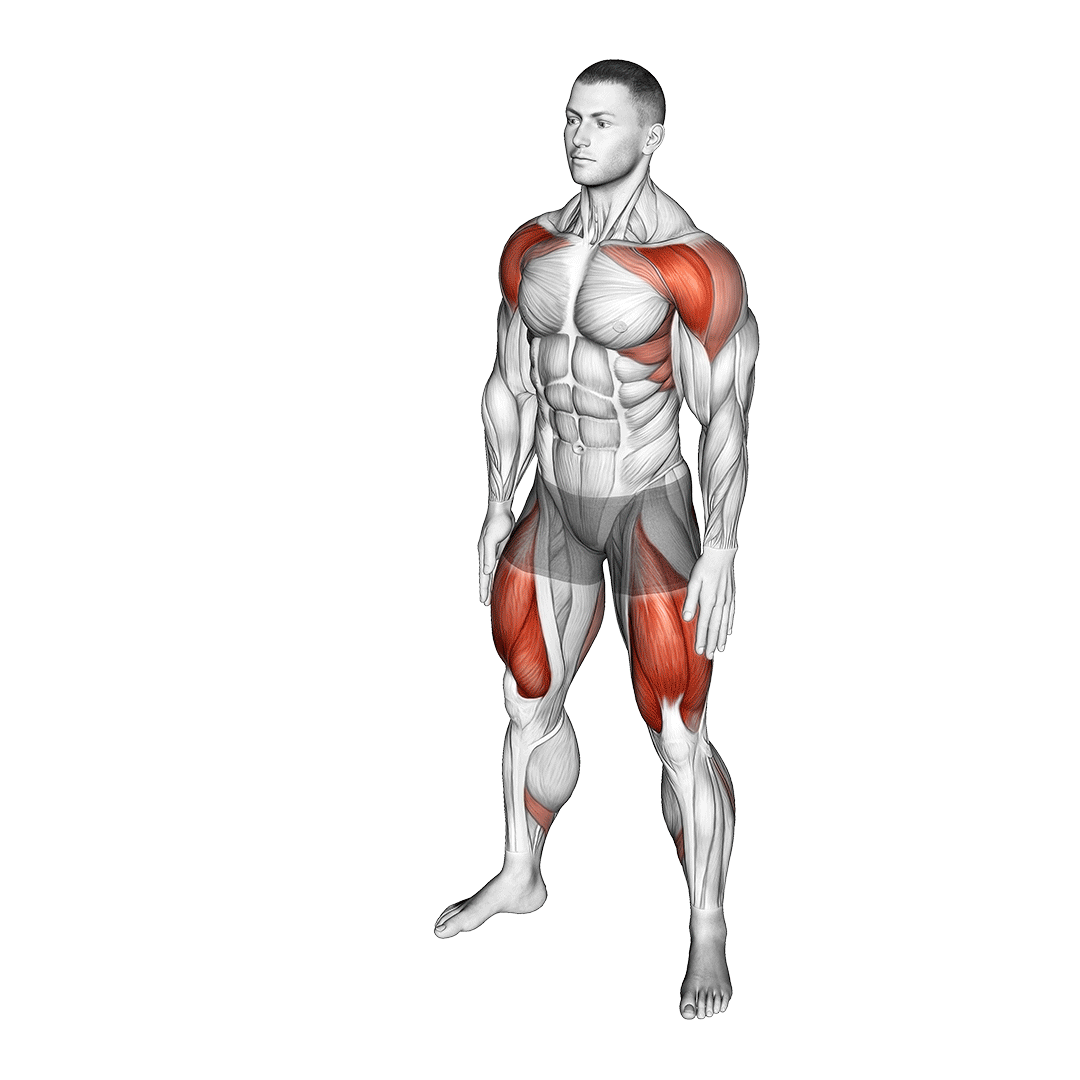
Unlike half knee bends, the bodyweight squat will involve the exerciser lowering themselves beyond parallel depth, thereby increasing posterior chain muscle recruitment and placing somewhat greater stress on the knee as it enters a wider range of flexion.
3. Lunges
Lunges are the perfect progression or substitute for lifters that were previously performing half knee bends for their quadriceps training stimulus, as the former exercise is arguably more effective at targeting the quads throughout their entire range of action.
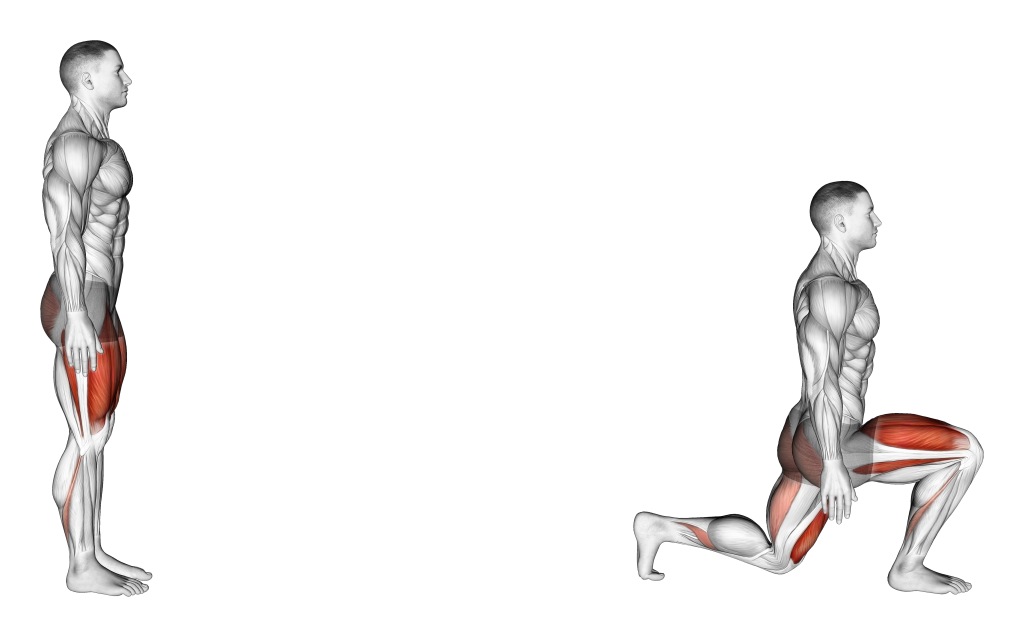
Note that lunges are a poor substitute to half knee bends for the purposes of rehabilitation or mobility drills, and are only meant to function as a more intense training exercise instead.
Frequently Asked Questions (FAQ)
What are Knee Bends Good for?
Shallow or half knee bends are great for improving the function and integrity of the knees, while also targeting the quadriceps femoris muscle that is responsible for moving the knee joint.
They are also quite effective as a rehabilitative exercise from injuries, and as a way to help combat the degenerative effects of aging on the tissues of the body.
What are Knee Bend Exercises?
Knee bend exercises, be it half or deep, are exercises that feature some level of knee flexion as a major mechanic of the movement.
They are often quite similar to squat variation exercises, and will almost always feature some level of quadriceps femoris muscular recruitment.
Final Thoughts
Remember to stop performing the exercise if you encounter any sort of pain, major instability, audible clicking or any other unpleasant symptom that may be indicative of an injury.
References
1. Han D, Nam S, Song J, Lee W, Kang T. The effect of knee flexion angles and ground conditions on the muscle activation of the lower extremity in the squat position. J Phys Ther Sci. 2017 Oct;29(10):1852-1855. doi: 10.1589/jpts.29.1852. Epub 2017 Oct 21. PMID: 29184305; PMCID: PMC5684026.
2. Coutinho D, Abade E, Gonçalves B, Santos S, Schöllhorn W, Sampaio J. Acute effects from the half-squat performed using a repetition versus differential approach in youth soccer players. BMC Sports Sci Med Rehabil. 2022 Feb 9;14(1):23. doi: 10.1186/s13102-022-00413-5. PMID: 35139892; PMCID: PMC8830118.

